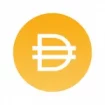What are stablecoins? How many types are there? What are they used for? Can you invest in them? What is their future? This article has the answers to these 5 questions. Words: 2346
By Lorimer Wilson, Founder & Managing Editor of munKNEE.com and a frequent contributor to eResearch.com, usfinancepost.com, bitgrum.com and talkmarkets.com. An abbreviated version of this article first appeared on bitgrum.com under the title: Stablecoins: What You Need To Know
Stablecoins: A Definition
According to Alex Gailey, in an article for time.com/nextadvisor:
- Stablecoins (SCs) are a type of cryptocurrency linked to a more stable asset, such as the USD, gold, or other cryptocurrencies, which act as collateral (as a reserve, if you will) for SCs in that, whenever an SC holder cashes out their tokens, an equal amount of assets is taken from the reserve.
- Essentially, SCs are a less volatile cryptocurrency with greater potential to resemble the types of currencies people already use every day.
Why Stablecoin Exist?
According to 101blockchains.com, it’s quite simple:
- Dealing or circulating with fiat money isn’t always an easy task in the cryptocurrency world because of the so-called restrictions and regulations on fiat money and this why many cryptocurrency exchanges don’t deal with dollars. Thus, it becomes quite difficult for investors who want to invest in cryptocurrencies with hard cash.
- SCs can be a solid substitute for dollars, and it will help you out to invest in other cryptocurrencies. The theory is to mimic the nature of dollars and using that to sell bitcoins and get cash.
- In addition, the crypto marketplace also lacks liquidity. SCs, on the other hand, can provide the liquidity that the crypto marketplace needs. This is why they are essential for the overall digital currency growth and worldwide involvement.
Different Types of StableCoins
These are typically categorized into four different coins as pointed out by 101blockchains.com:

Source: 101blockchains.com (the world’s leading online independent research-based network for Enterprise Blockchain Practitioners. Subscribe to 101 Blockchains to get all the latest news about blockchain)
Fiat-Backed
(Most of the information that follows are edited and abridged excerpts from an article from 101Blockchains.com.) These are backed up by fiat money and, as such, it’s somewhat of a digital form of fiat money and because of that these types of SCs have real money backing them up from the banks. This infrastructure makes the overall concept of decentralization somewhat invalid, however, because ultimately the cryptocurrencies are being controlled by the banks, which is a centralized system.
- Its advantages:
- Fairly Stable: Fiat currencies are quite stable as they have the government backing them up and you will be able to have legal rights as this SC deals with legal terms.
- Quite Simple: You will be able to understand the mechanisms quite easily. Also, it’s a straightforward algorithm, no complex situations or whatsoever.
- Its major disadvantages:
- Centralized System: The basic requirement of blockchain is getting rid of centralization issues and that doesn’t work here so, you can’t call these networks decentralized or distributed.
- Trust Issues: You would have to trust them blindly but this element goes strictly against the nature of cryptocurrencies as external audits could be required for validating all the accounts.
- Rules: As you deal with fiat money passively, you would be obliged with rules and regulations which many of us don’t want.
Commodity-Backed
These are backed up by commodities such as gas, valuable metals, etc., with the most common one being gold which will always be tradable because you’ll always find demand for this metal and you will always have a specific value assigned to each of the coins.
- Its advantages:
- Real Asset: The assets are tangible and can be redeemed at any time using the conversion rate and own the asset itself.
- Higher Stability: The value of commodities don’t really fluctuate that much so you can think of them as a stable source of investing.
- Offers Liquidity: A unique approach to tokenize commodities is making the blockchain platform more liquid than before.
- Its major disadvantages:
- More Involved Process: This isn’t as simple as fiat-backed stable coins list.
- A user would buy gold or another form of the commodity through the platform.
- After that, the vendor will provide the gold that the user just bought and the custodian will preserve this in a safe vault.
- Once the vendor stores the gold, everything they did is placed on any form of a digital card. This card is necessary because in case of any mismanagement the user or vendor can claim their processions based on the information.
- This digital card gets sent to a smart contract on the network, and that contract then mints new gold stablecoin or token on the net.
- The users then get the tokens they claimed for in the start.
- Too Many Authorities: This type of stable coin requires a lot of extra authorities such as the vendors, custodians, and other authorities. That’s why in the end, it kind of becomes a centralized system rather than a decentralized one, which increases the risk of failure.
- Requires Audit: Making sure that everything is on point will require audit sessions. This consumes a lot of time and undermines the overall blockchain experience.
- More Involved Process: This isn’t as simple as fiat-backed stable coins list.
Cryptocurrency-Backed
These coins are backed up by a mix of different cryptocurrencies which prevents any volatility risks. If one of the cryptocurrency has a massive price fall then the other currencies can back up that fall ensuring a stable value for the tokens.
- Its advantages:
- Decentralized System: This SC is highly decentralized so, if you are fond of the decentralized architecture, then you could consider it.
- Higher Efficiency: You can quickly transform any kind of crypto to another crypto on the network. It’s relatively easy to do, and it increases the liquidation process.
- Transparency: All transactions are recorded on the ledger system, so you’ll be able to see everything that’s happening.
- Creates Leverage: As the coins are over-collateralized, meaning that any user can use it as a means of trading, which ensures an efficient process.
- Its major disadvantages:
- Unstable: More volatile as they are backed by cryptocurrencies themselves.
- Too Complex: The minting process is complex and depends on so many factors that if even one of them is missing, then the whole process would collapse.
- Instant Liquifying: You can liquidity your assets if it falls below the threshold value BUT, in doing so, the price range could drastically shift, making the whole system volatile.
Seignorage-Style/Non-collateralized
These coins don’t have any assets to back them up; rather they use an algorithm to burn or add crypto to stabilize the value and a governed approach that ensures the expanding or limiting of coins on the network whereby, if the demand increases, new coins get minted, and it stabilizes the price hike with the primary objective to make the value as close to $1.
- Its advantages:
- Fully Decentralized: As everything gets monitored by the algorithms, the network is fully decentralized without any third party influence.
- No Backup Assets: This stable token doesn’t have any kind of collaterals backing it up so you would never have to worry about price fluctuations of the collateral affecting the system.
- Really Stable: It’s comparatively more stable than other types of SCs. The algorithms will always make sure that there is never too many or too few coins on the network.
- Its major disadvantage:
- Complex Process: Even though the algorithms take care of everything, it is a sophisticated process as making sure that the minting and destroying coin ratio always balances each other out, is exceptionally difficult.

Source: 101blockchains.com (the world’s leading online independent research-based network for Enterprise Blockchain Practitioners. Subscribe to 101 Blockchains to get all the latest news about blockchain)
Another way to look at SCs, according to dmarge.com, is:
- Custodial Stablecoins: are backed 1:1 by a single company. For every 1 USD stablecoin that enters the crypto market, a financial organization holds the equivalent in dollars. This is the most common type of stablecoin. Custodial SCs include: Tether, USD Coin and Binance USD.
- Algorithmic Stablecoins: use a range of blockchain-based mechanisms to maintain their fixed price. After recent regulation fears, algorithmic SCs have grown in popularity as they tend to be more structurally decentralized. TerraUSD is an example of an algorithmic SC.
- Collateralised Stablecoins: use smart contracts to “lock up” other crypto assets as collateral for loans. From these loans, automated programs generate new SCs accordingly and maintain price stability to the underlying asset. Dai is an example of a collateralized SC.
The most popular SCs are:
-
- Tether is the world’s first SC and is the most transacted and liquid SC in the crypto market with a market cap of nearly $83 billion, making it the No. 3 cryptocurrency overall, behind Bitcoin (BTC) and Ethereum’s Ether (ETH).
- Tether’s goal is to keep its value pegged, 1-to-1, to the U.S. dollar to enable crypto exchanges to offer USDT as an alternative to using fiat currencies so investors can make quick trades. See its current price ratio to the USD here.
- Tether is 100% backed by reserves of which about 85% is in cash, cash equivalents, short-term deposits, and commercial paper with the remaining 15%, or so, in other assets and receivables from loans made by Tether or third parties.
-
- USDC, like many of the coins included on this SCs list, is pegged to the U.S. dollar. See its current price ratio to the USD here.)
- USDC now has a market cap of nearly $50 billion, making it the second-largest SC by that measure.
- USDC runs on many blockchain networks with many crypto exchanges, online wallets, protocols, and other services integrating USDC into their platforms to facilitate easy payments globally.
MakerDAO (DAI) – Cryptocurreny-Backed
-
- Dai is correlated to the U.S. dollar, but unlike many SCs, Dai can also be pegged to different cryptocurrencies, such as Ether, USD Coin (USDC), and others that can be used as collateral. See current price ratio to the USD here.
- The multi-collateral option that Dai offers arguably increases Dai’s price stability as a SC.
- Dai’s market cap is more than $9 billion, making it one of the top SCs available for users.
-
- BUSD is another U.S. dollar-backed SC, and was developed via a partnership between Binance, one of the most popular cryptocurrency exchanges, and Paxos, a regulated blockchain infrastructure platform. See current price price ratio to the USD here.
- The goal of Binance USD is to increase the speed at which digital assets flow through the global financial network.
-
- TUSD was the first regulated SC fully backed by U.S. dollars and has a market cap of more than $1.3 billion. See current price ratio to the USD here.
- TrustToken doesn’t charge any trading fees on its TUSD coins, which is enticing to many investors, but TrustToken Inc. – the exchange that issues TrueUSD – isn’t fully decentralized and users are bound to the standards of the platform. In other words, regulatory actions on the TrustToken platform will affect holders of TUSD.
-
- TerraUSD’s goal is to remain both price-stable and growth-driven with its protocol stabilized by its own native cryptocurrency, Terra. See current price ratio to the USD here.
- The Terra platform protocols incentivize users to earn extremely low-risk profits when TerraUSD’s price is anything other than $1.
- By linking TerraUSD to the regular Terra (LUNA) coin (see latest price here) and allowing LUNA to be exchanged for either UST or dollars (and vice versa), more UST is created when its price rises above a dollar. The UST pool starts to contract when its price is below a dollar. This give-and-take keeps the price of TerraUSD stable (see current price here) with respect to the dollar.
- Although it is rated a bit riskier than the likes of Tether and Binance USD, TerraUSD is classified by the analysis site InvestorsObserver as a low-risk coin.
- EDITOR’S NOTE: Despite Terra’s claim of being price stable Terra has lost 55% of its value since May 9th. Go HERE to read the latest from yahoo!fianace.
 Digix Gold Token (DGX) – Commodity-Backed
Digix Gold Token (DGX) – Commodity-Backed
-
- DGX works differently than the other SCs on this list because it is tied to the value of one gram of gold. As gold’s price fluctuates, so does the value of DGX, which makes the cryptocurrency more volatile but also attractive to investors who believe in the power of hard assets. See current price ratio to the USD here.
- There are roughly 54,600 DGX coins circulating in the market, and the coin’s market cap is just over $2 million.
SC Uses/Advantages
- Maintains all the transactions within crypto exchanges so, for example, if you want to buy more Solana with your Ether, you can swap your Ether for SCs at a U.S. dollar value and then buy more Solana.
- Saves on fees and maintains the value of your crypto during volatile trading periods because many crypto exchanges don’t charge fees when exchanging U.S. dollars into SCs.
- Facilitates the sending of funds across international borders (aka international remittances) although it should be noted that such transactions come with some risk because SCs are not backed by a government entity but, instead, by a private company.
- Makes it easier, faster, and cheaper to exchange altcoins for SCs vs. trading coins for actual dollars in and out of a bank account. For example, you could quickly convert your Bitcoin to SCs pegged to the U.S. dollar, like Tether, and it would continue to live in the exchange you’re operating in and hold its value and you could then exchange those SCs for other coins. If you were to convert your Bitcoin directly to U.S. dollars, it could take longer to enter your bank account and would effectively take it out of the crypto exchange.
Investing In SCs
SCs don’t make for great investments and, as such, are better suited for digital transactions and converting digital assets to and from “real” money.
SCs: Their Future
There is not much in the way of government oversight or regulations related to SCs but, because of their potential for future use by everyday consumers to buy things and operate outside the U.S. monetary system, we are likely to see an effort to do so by federal monetary authorities as the year unfolds.
 munKNEE.com Your Key to Making Money
munKNEE.com Your Key to Making Money





